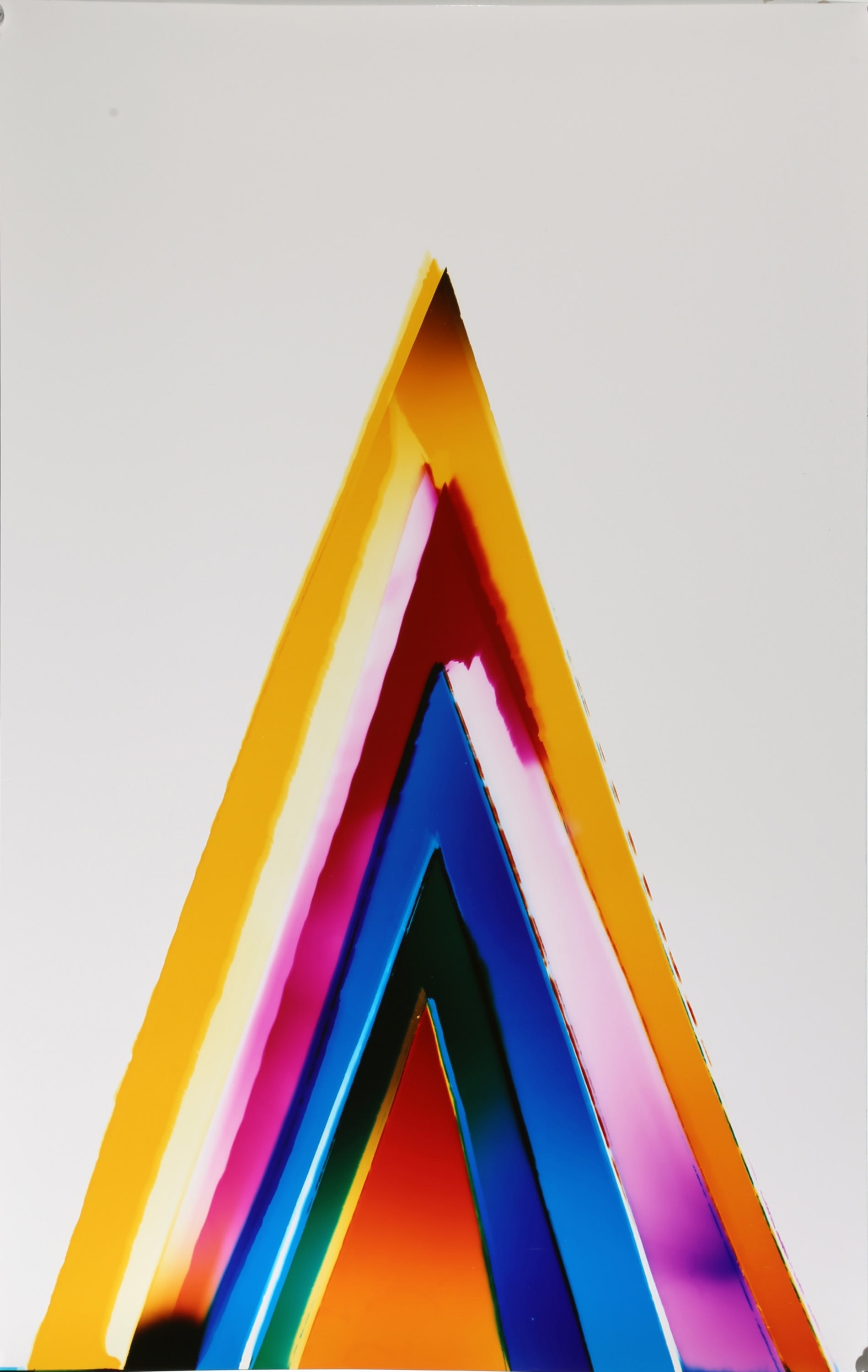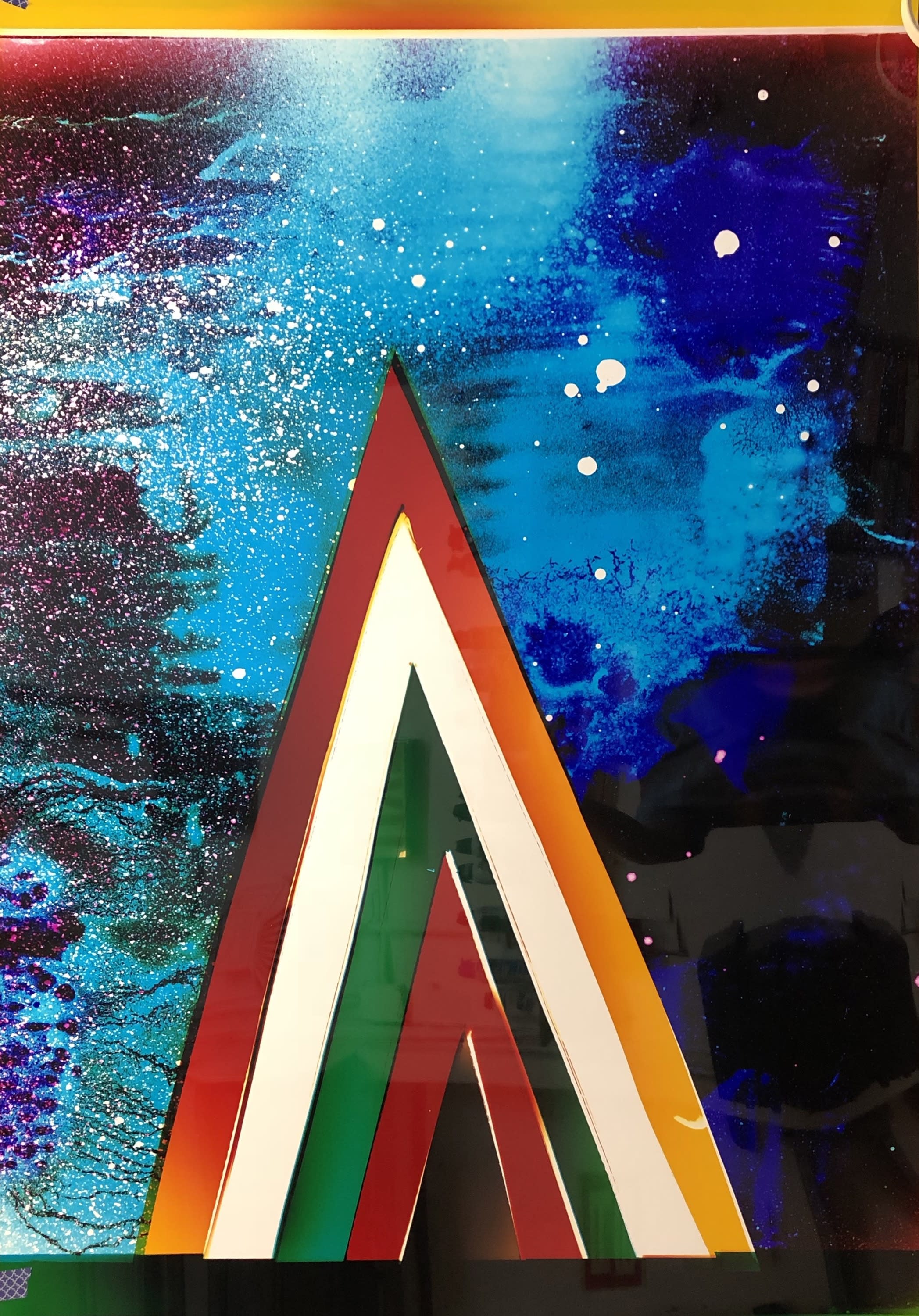This week PHOTOFAIRS speaks to Brooklyn-based artist Liz Nielsen about her new body of work 'The Arrival', recently displayed at Black Box Projects in London. Liz Nielsen is an experimental photographer who creates abstract landscapes and objects. She invites the viewer to dive into alternative universes by layering exposures onto photographic paper. Nielsen's photograms are created, without a camera, entirely in a "dark room". Rather than using photography for visual documentation, Nielsen's interest instead lies in exploring the possibilities of light and the creation of alternate landscapes. Unlike Nielsen's previous works, predominantly created in her Brooklyn studio, her current series 'The Arrival' was made during a summer residency in California.
I like to think about the inside of light, bouncing from one external thing to the next, from one body to another.
Thank you very much for taking the time to speak with us and congratulations on your show. Your latest work is quite different from your last series in terms of the colors that you use but also in the way you are reusing negatives with different layouts and exposures to create works that ultimately stand in dialogue with each other. Can you tell us a bit more about this series?
I am constantly aiming to push the boundaries of the medium as well as my own artistic practice. Some of the images and landscapes in this show are based on the scenery in California, the light, and the LA mountains. However, several of the backgrounds are not representative of that scenery, and instead, are new experiments in texture that shift the foreground and backgrounds in new ways. Whether I am exposing a one-to-one contact print or enlarging an image, I am using handmade negatives, and I am controlling the light, sometimes letting more light come through or blocking that light out. The works in this show have many exposures, and are built layer by layer. The process itself requires a lot of planning.
Your practice is related to painting or sculpture (even more so than photography, one could argue). How did you come to create these photograms and how would you describe your practice?
I have always worked with a camera as a form of documenting what I see, but this documentation has become more research than the final product for me. Whilst my current work is technically photographic, I often describe it as painting with light, or perhaps even more accurately, as 'light recording'. I am intrigued by light and how it can be directed. This comes from my love of physics and mathematics. Furthermore, I enjoy thinking about how the wavelengths can be combined and layered on top of each other.
The sculptural part of my work really comes from moving the 3d world into the 2d world but in an abstract way. The world can be deduced into shapes and I am looking for ancient yet still contemporary shapes such as circles, squares and triangles. When I am looking at things representationally I am tracing and retracing the shapes over and over again in my head, and then in my notebook, until they become these 'ideal' shapes that I composer. So unlike a traditional photograph that often holds the 'absolute truth' of something, the abstractions and landscapes become dislocated from space and not bound by time. They represent only themselves and nothing exterior.
Although one can recognize and associate familiar symbols and objects in your work, it remains abstracted and, in a way, you create these phantasmic worlds where people create their own meaning.
Sometimes my work can be extremely representational and most people see the same thing, yet other times, the read of it is quite varied. I like to experiment with colors and shapes and spatial depth. - so for instance, how some of the things fall behind or in front of each other through the effects of light or colour.
 Cocktail Portal, 2018, Signed, titled and dated on artist's label, Analogue Chromogenic Photogram on Fujiflex, Unique
Cocktail Portal, 2018, Signed, titled and dated on artist's label, Analogue Chromogenic Photogram on Fujiflex, Unique
Also, some of my research deals with energy, so I am looking for real places that are known to contain heightened energy. Spiritual places or sites where an anomaly has happened. The mere fact that people travel to see such sites creates another layer of energy, because of this collected gathering and openness to experiencing something 'otherly' there. I invent these places in my work and hope that people have a transcendent moment when they look at my photograms. For everyone, my works have their own meaning and their own moment. Abstraction owes that to you in a way, and I hope that people arrive at the photograms and get something from them, something positive, I hope.
The range of colour that you achieve with your practice is fascinating. There are several tones of reds and pinks as well as blues and greens. How did you come to use this range of colour?
It has taken me a lot of time to get to this range, and many attempts until I got the different tones that you can see in the work. When I first started creating photograms, Blue was the color that always appeared on the paper. I eventually found a way to work with the wavelengths and harmonize them but it has been an evolution. I'm always learning.
The pastel colours in your current work are incredibly subtle. You are using these tones for the first time in the works you created in California. Has the light there influenced you to use them? And what in general fascinates you about light?
The light in California is incredible. I never really understood why everyone wants to live in LA, but now having done a residency there, I appreciate the city much more. As everything is very spread out, quite a bit of time is spent in the car. I really got to experience the light in different ways and at a variety of times. It is really unique to observe the light in that city. You are in the desert, in the mountains, and in an urban environment too. What you see, is clear skies sometimes and other times the pollution and artificial lights that cluster the city, and in that a certain level of diffusion where the light bounces from the urban light. All these factors contribute to an 'LA-specific' sense of light. I am drawn to this mixture of artificial and natural light sources. Moreover, light has this really incredible quality. It is one of the fastest things on earth that we can relate to. In my practice, I work with pure light, breaking apart and putting together the spectrum onto paper. I also like to think about the inside of light, bouncing from one external thing to the next, from one body to another. In a way, my work relates to thinking about the possibilities of light and what we can and cannot do with it. There are so many inventions that have not yet been discovered, and this unknown dimension fascinates me about light.
 Cosmic Portal II, 2018, Signed, titled and dated on artist's label, Analogue Chromogenic Photogram on Fujiflex, Unique
Cosmic Portal II, 2018, Signed, titled and dated on artist's label, Analogue Chromogenic Photogram on Fujiflex, Unique
Anna from Black Box Projects has given me a tour through your exhibition and explained that for this particular series you have reused your negatives with different exposures and layouts, to create works that stand in dialogue with each other yet remaining unique and distinct. This is a repetition that you recently started experimenting and exploring with. In a way, this is similar to Monet going back to the sea roses and visiting one particular location at different times of the day to see what effects the light has on the landscape and hence give a completely different view/image of the scenes. Would you agree?
Yes, I have been reusing one part of the negative so that I have a structure to make the same kind of shape twice. Then, I switch out some parts and include others. You can almost watch the light shift like a painter watches the morning, afternoon and evening light and paints throughout the day. The paintings look significantly different. Even the focus becomes different from where the light is hidden or shown, dependent on certain colours. That is something that I have been thinking a lot about in this series, and I am still thinking about how to include changing and mirroring effects. There are a couple of pieces in this show called the 'portals' that have a mirrored aspect to them. Almost like one switches to become the other or sits in quantum opposition to it. This draws upon my interest in other dimensions such as parallel universes. I am thinking about this parallelism or 'other universes' concept a lot for the show I'm currently working on. The exhibition is called 'Entanglement' and it is about contested energies.

